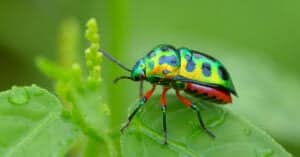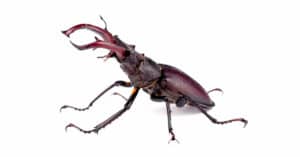You may have heard of May beetles and June bugs and could have been wondering what the difference between these two terms was. How do you recognize a May beetle and what separates it from a June bug? Interestingly, however, there is no difference between a May beetle and a June bug. They are simply interchangeable names that refer to the same insect.
A May beetle or a June bug is an insect that seems to appear out of nowhere during late spring into early summer and disappears at the end of summer. It would appear that these insects invade during this time of high activity and then die immediately afterward, making it seem as if they never existed. These periods usually start in May and June, therefore explaining the names given to the insects.
We discuss some key facts and details that you should know about May beetles or June bugs, including answering whether they are harmful to human beings.
Appearance: How Can You Identify May Beetles/June Bugs
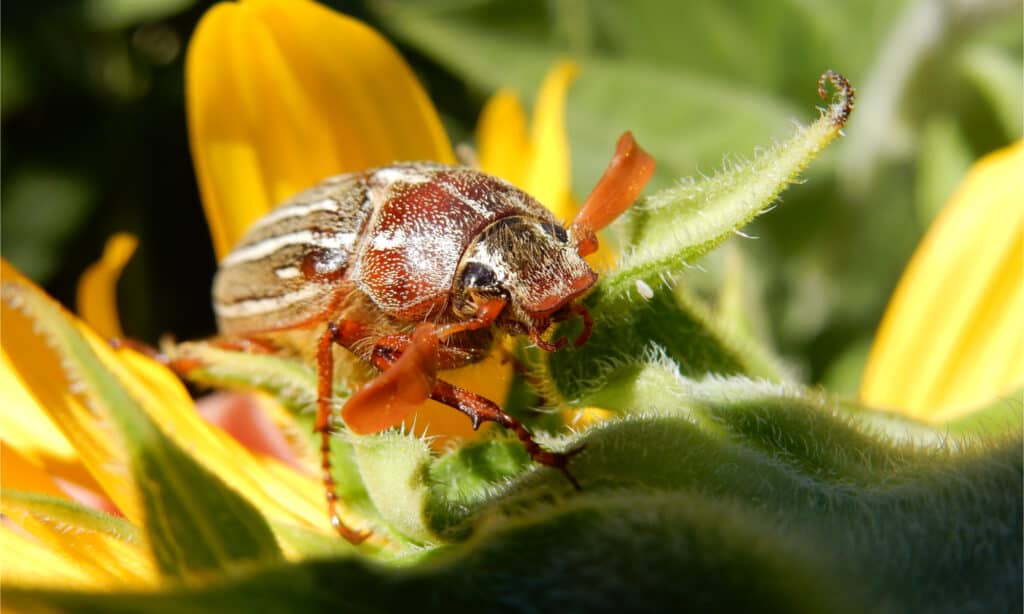
June bug on a sunflower.
©Sean Harris acts238/Shutterstock.com
June Bugs look like every other beetle. They are usually a single color of reddish-brown or black. Their bellies are typically brown or green and have a metallic sheen to them. May beetles also have two sets of wings and barbed legs that help them stick to any surface.
Furthermore, these insects are nocturnal which means that they are active through the night and you barely find them during the day.
May Beetles/ June Bugs Species and Scientific Name
The scientific name of June bugs or May beetles is Phyllophaga sp. This insect belongs to a very large genus that possesses over 900 species.
Reproduction: How Do May Beetles/June Bugs Reproduce
Female June bugs produce about 50-200 eggs underground during mid-summer. The gestation period of these eggs is two and a half weeks to four weeks after which the eggs hatch. The next stage is the larva stage and then the pupa stage before they emerge from the ground as adults.
Diet: What Do May Beetles/ June Bugs Eat?
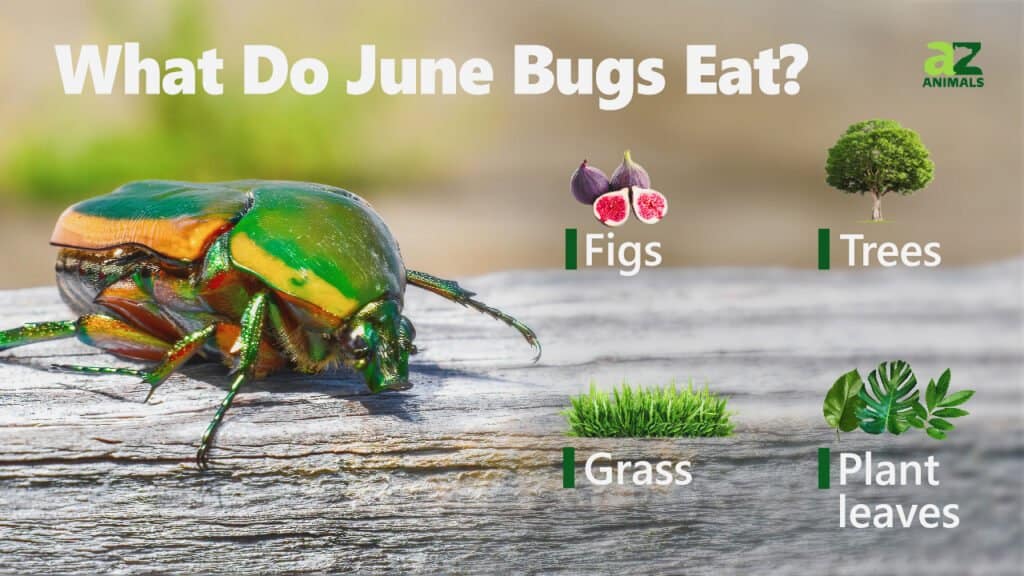
June bugs eat leafy plants, oak, walnut, potatoes, fruits, and generally any other form of crop. They are herbivores both at the larva stage and as adults. At their larva stage, May beetles predominantly eat the roots of vegetation and crops. From this, it is very clear that June bugs may not be the best friends of farmers and gardeners. They are indeed nuisance and pests to farmers because they can cause great damage to crops and plants.
You should note that May beetles are more deadly to crops at their larva stage (called white grub) than at their adult stage because at the adult stage they generally do not eat enough to pose serious damage to plants, trees, and vegetation. Furthermore, the different species of June bugs have preferred plants, especially at the adult stage. At the larva stage, they are not picky and eat anything available.
Predator: What Eats June Bugs/ May Beetles
June bugs serve as prey and food to a good number of animals and birds. Some wild animals that feed on May beetles include raccoons, moles, and skunks. June bugs are good sources of protein for these animals both in adult form or larva stage. The May beetle is filled with 7 to 18% of fat and about 50% percent of protein, making them rich meals for many predators. The terrible thing, however, is that many of these predators also destroy gardens and farms to dig for the larvae of June bugs.
It is not only animals that feed on May beetles, insects also do the same. A prominent example is the American pelecinid wasp. This insect grows far bigger than the May beetle and uses the May beetle as food for newly hatched wasps on many occasions.
How Do You Get Rid of June Bugs/May Beetles?
Considering the damage June bugs can cause to crops and plants, farmers and gardeners have to be equipped with the best tools to rid of them. Some recommended ways to deal with them at their different stages include:
- Deal with the grubs (larva) by spraying insecticides that kill them in the ground. This is a great way to curb the infestation before it even begins.
- You can build homemade traps that help you capture them. It is important that these traps contain a light that attracts the insects, and when they come, they get trapped either in oil or anything else that holds or kills them.
- Speak to pest control companies to get the best insecticides that can deal with the unique situation in your garden, farm, or home.
Are June Bugs/ May Beetles Dangerous to Human Beings?
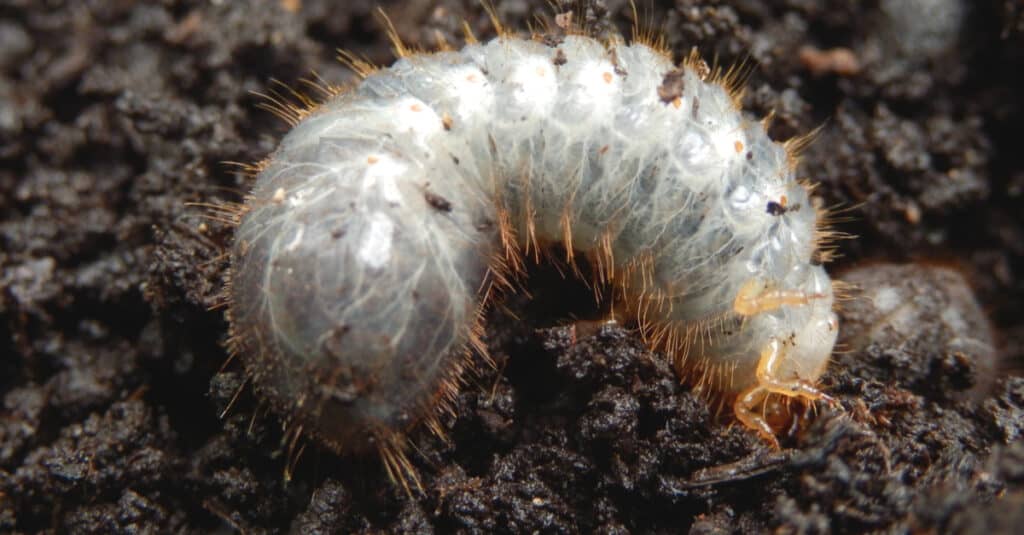
May beetles are not dangerous to humans.
©Stephen Farhall/Shutterstock.com
No, May beetles are not dangerous to human beings. June bugs are completely harmless to the human race. They do not sting, bite or carry diseases that could affect human beings. They are only dangerous to crops and plants. Therefore, if you spot a June bug, don’t get too worried about it.
Are June Bugs/May Beetles Edible?
Yes, June bugs are edible and you can eat them. In fact, a community in northwestern California considers them a traditional food. You can harvest them from the ground at larva stage or you can catch them when they get attracted to lights in your home. Many people find them tasty, and their protein is definitely good for your body.
Some Incredible Facts About the May Beetle/June Bug
Here are some fascinating facts about June bugs that you should note:
- A female May beetle can lay up to 200 eggs per season.
- May beetles/June bugs are attracted to the lights that came from residential houses and gardens at night.
- There are about 900 different species of June bugs/May beetles.
- June bugs are edible, and people have generally preferred to eat them at the larva stage than as adults because that is when they are tastier.
- June bugs have four stages in their life cycle: Egg – Larva- Pupa- Adult.
The photo featured at the top of this post is © Galina Savina/Shutterstock.com
Thank you for reading! Have some feedback for us? Contact the AZ Animals editorial team.



